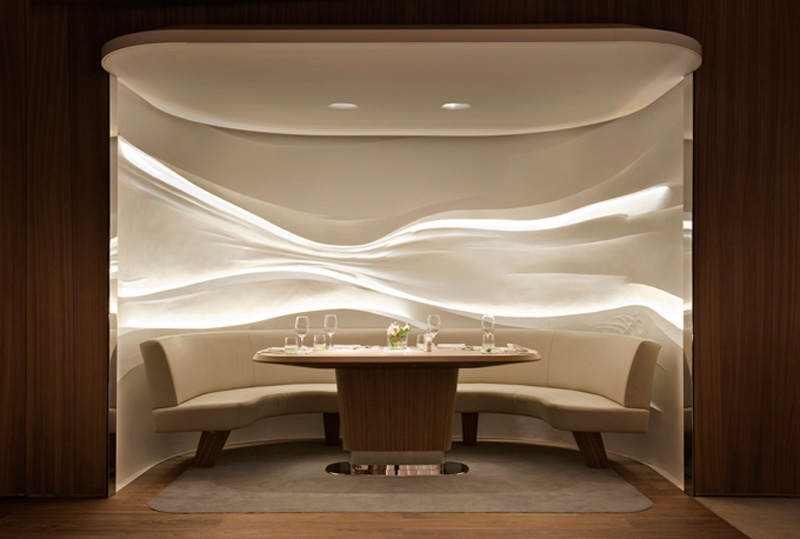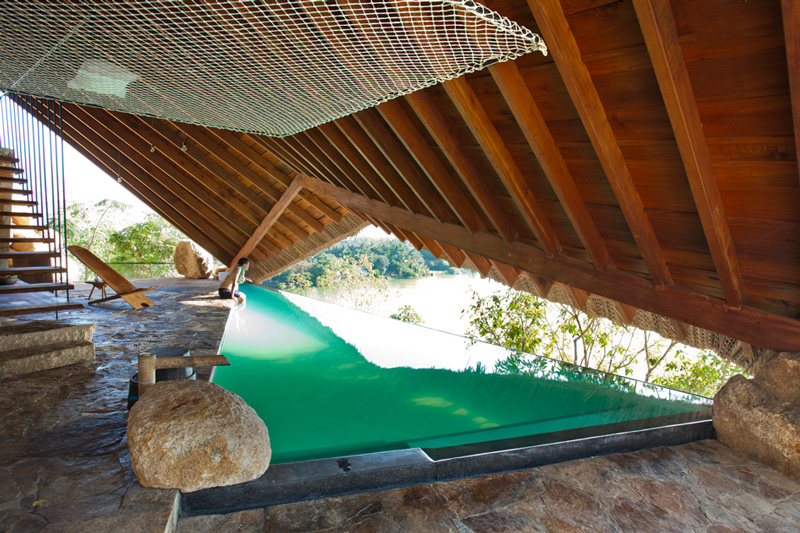The accommodation we choose when travelling is an important aspect of the whole experience and should naturally be somewhere that will aide our path to decompressing the stress of our everyday lives, whilst aiding relaxation and calm.
We’ve picked out three contrasting examples of hotels that daydreams are made of; that embody biophilic principles to create desirable spaces that will also improve your mental and physical health and well-being:
Juvet Landscape Hotel
The stunning Juvet Landscape Hotel in rural Norway has been designed by Jensen & Skodvin to maximise the guest’s experience of the surrounding natural landscape from the comfort of the interior. Seven pine and glass buildings with panoramic views promote the connection with the mountains, rivers and woodlands in what can only be described as a biophilic retreat.
The Juvet’s interior spaces are designed to ensure they do not detract from the views with features like floor to ceiling windows, minimalist dark decor and viewing areas which immerse guests in the natural environment. Inside guests can hear the sounds of the river flowing whilst outside the cabins there are hiking trails to immerse guests further into the landscape.

Bayerischer Hof Hotel, Nicolas Matheus
Beyerischer Hof Hotel
By way of complete contrast, the lounge of the Bayerischer Hof Hotel in Munich has been designed by the Jouin Manku Studio. Its sophisticated style incorporates natural materials, textures, forms and colours to create a calming retreat from the city. Furniture is made from wood and leather whilst soft green tones are used for the wall colour. The flooring is a mixture of textures too areas of carpet are broken up with stone and wooden flooring. A large curvaceous fireplace makes a feature of the natural element of fire and large floor to ceiling windows allow natural light to flood in. A terrace extends the lounge outside with views across the city to the mountains. Within the restaurant area booths with backlit carved panels have been designed to emulate a mountainous landscape.

I-Resort A21-Studio
I-Resort
I-Resort, Nha Trang in Vietnam is made entirely out of natural materials including wood, stone and coconut leaves using local architectural techniques. There is a circular thatched-roof courtyard around a large pool of water which provides natural ventilation and shade in the humid weather and landscaped gardens with lotus ponds weave between this, the spa, restaurant and guest’s rooms. The result is a resort over 3,200 square feet which is rich in natural textures with plenty of connection with the surrounding landscape.
It is well known that biophilic elements add value to the hospitality sector; guests will pay a higher rate for a room with a picturesque view looking onto nature as opposed to the view over the car park. However it seems that much of the industry is still too focused on intrinsic design principles, impressing others with extravagant design gestures, whilst missing valuable opportunities to improve guest experience, unwind and relax.
There is overwhelming evidence that demonstrates the restorative benefits of contact with nature, living elements and references to nature, that I believe that the leisure industry should be doing more to incorporate these biophilic aspects to help guests improve their mental and physical health and wellbeing.
Have you found or experienced a hotel that really embodies beneficial biophilic principles?
Let us know with a comment – we would love to know about it for future articles.